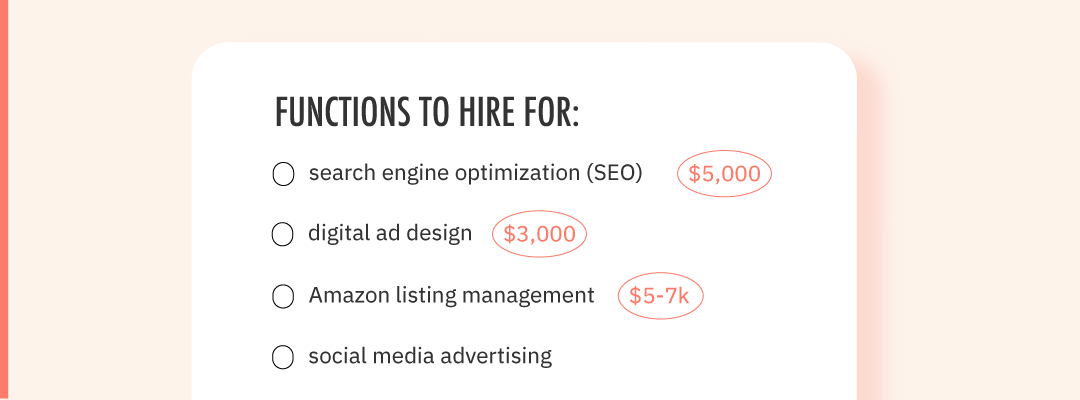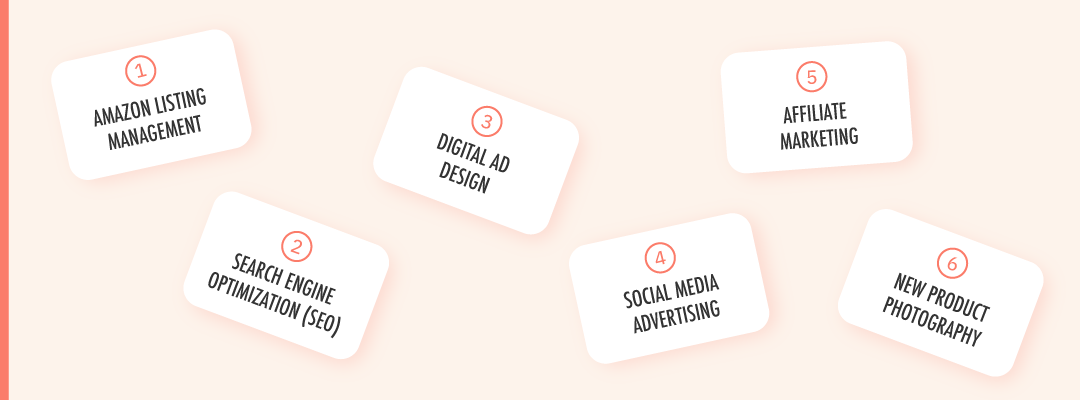The Path to Profitability: Hiring for Growth | Part 1

With current fears of inflation and recession, market conditions have started to shift for brands that are looking for that next infusion of capital. Whether you’re looking for debt or equity investment, capital providers like lenders and venture capitalists are becoming increasingly cautious about who they give money to, and how much they are willing to distribute.
Brands who are in the middle of a growth phase and have been running at a high burn rate are going to find it increasingly more difficult to get funds in the near future. One of the most valuable things you can do to show your skill as a business operator is to develop a clear and well reasoned path to profitability.
The Assembled Brands team analyzes the financial data for hundreds of consumer goods businesses each year in the course of our normal business. By helping a large number of CPG brands reach their growth goals through funding over the years, we have developed a strong understanding of what consumer goods brands really need to achieve profitability.
Although most guides are a great place to start, they’re often written for tech startups and do not address the specific needs and concerns of consumer goods businesses. Here are a few things you can implement today to set your business up for success, and to get on the road to profitability.
Part 1: Hiring for Growth and Profitability
A common pitfall that newer brands come across as they start to gain traction in the marketplace is overhiring. Small brands often have a laundry list of things they’d like to accomplish but don’t have the manpower for. Once companies get a big raise or start seeing bigger revenue numbers, many rush out to hire all those people they wish they had.
This has been one of the top culprits we’ve seen for high burn rates. Credit is getting tighter this year, and lenders aren’t as comfortable lending to brands that lack a well sized cash runway. Cash runway measures the time you can operate your business at the current burn rate, provided you don’t raise any additional funds. As the market tightens, lenders are starting to look for longer runways when evaluating a business.
You don’t need to let this stop you from hiring the people you need, as the right hires will accelerate your growth and your path to profitability. Follow our quick steps to prioritizing your hiring and improve both the quality and the speed of your new hires.
To get started, sit down and write out a list of all of the functions you need to hire for. This list should be actual work that needs to be done, instead of a list of job titles. For example, rather than writing “Marketing Coordinator,” you might write “Digital advertising,” “SEO,” or “Amazon listing management.”

Next, assign a value to each of these functions: How much additional money will a new hire successfully performing this function result in? As an example, you may have concluded that a new digital advertising hire will save you $5,000 a year. In this case, write $5,000 next to the function. If someone managing a new sales channel (let’s say wholesale) is expected to bring in $100k, write it down. Remember to not overthink this. It does not need to be too precise, so a quick gut check number for each item works just fine, as does writing out your numbers as a “5k - 7.5k” range.

Next, you’ll create a ranking with each one of these functions. Get your team and decision makers (if co-located) involved in this process by writing out each function on a 3x5 card, and arrange them in order from most valuable to least valuable. For remote teams, you can also do this on a digital diagramming app such as Miro. We recommend the card method for a team of 1-3 Another option for remote teams is to have each team assign a value number (for example, a number from a scale of one to ten) and then average across the team to create the ranking from the average values. This method works better for larger groups of decision makers.

Once your functions are listed out, you’ll be able to identify natural groupings of your top 10 functions. These are your top priority hires, and as a bonus, you’ve also just written the job description you’re going to post. Start with no more than two hires and give yourself a chance to ramp them up and evaluate their performance. It is possible that you will start to realize that some of the functions you thought were of high value aren’t delivering as expected. Slowing down your hiring gives you a chance to figure out what works for you, and potentially evaluate new functions you didn’t know you needed before.
You might find an odd outlier that doesn’t seem to fit in the other roles. This is a good opportunity to evaluate your team’s workload, and see if there are activities that can be dropped and replaced. Should you realize that you don’t have the right people in place, you may still need to hire for it. If there’s a single function that does not fit the scope of a full time role, it might also be a good opportunity to find a specialist who can consult on a part time basis for that function.
You may also find that some of your high-priority functions are not delivering the return you need to justify a full time hire. This is another scenario where consultants should be considered. Although consultants come at a higher cost per hour, they often work for fewer hours than full-time employees, and often have a greater impact on your business.

It can be frustrating to a small, overworked team to hear that some of the hires they’ve been asking for are delayed.
The road to profitability can be long and tedious, but by making sure that your spending strategically, so that your losses do not grow quicker than your top line, you are setting yourself up for success in the future.
Stay tuned for part two of our ‘Road to Profitability’ series to get more insights on how to reach profitability for your business.


%20(1)%202.svg)
.jpg)



.avif)